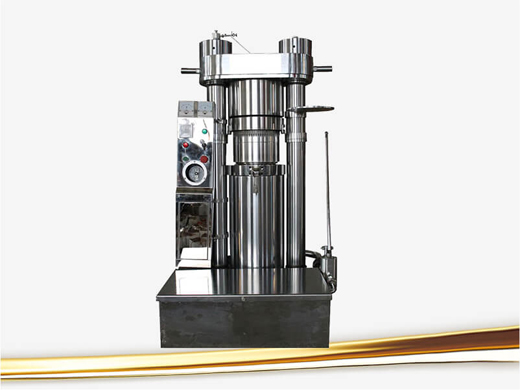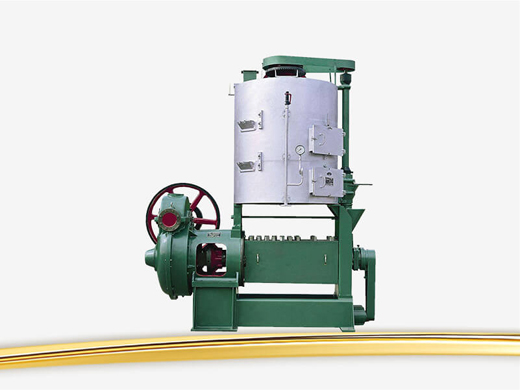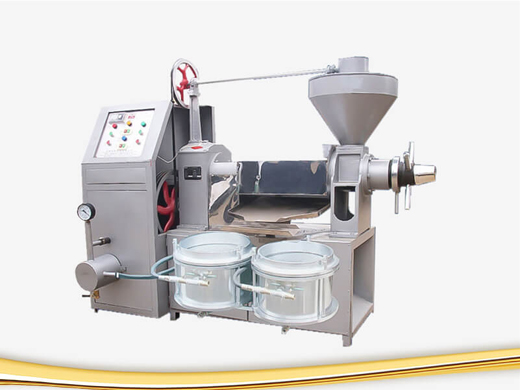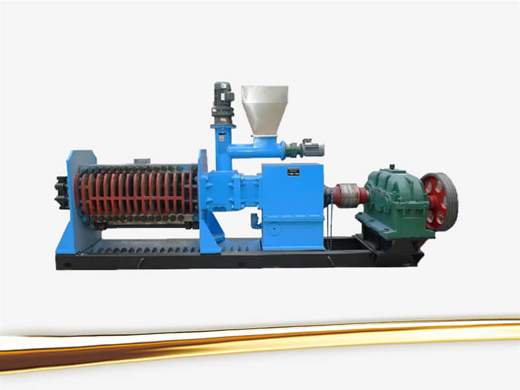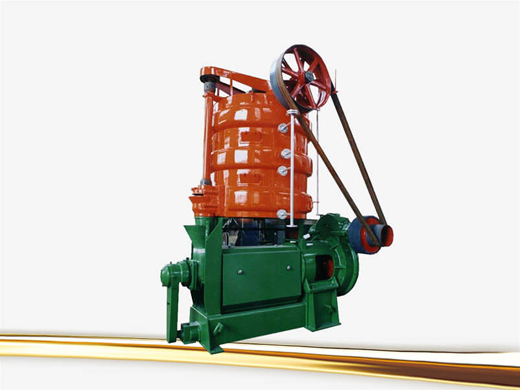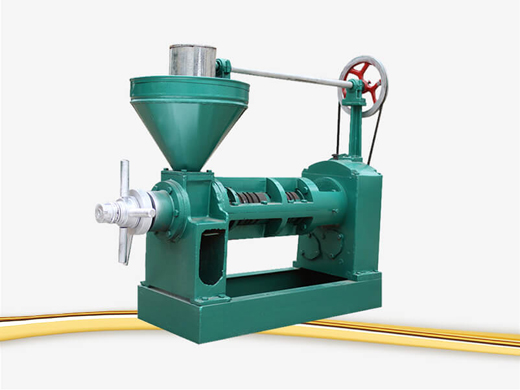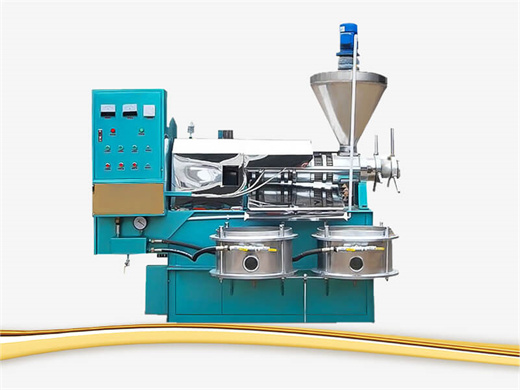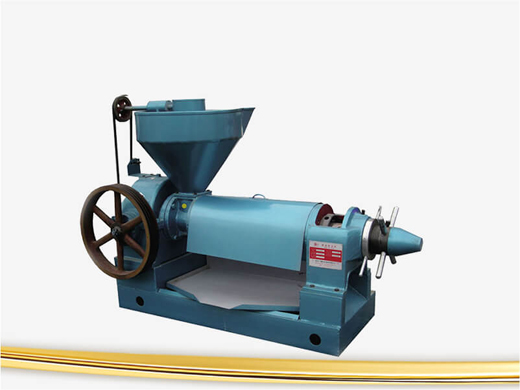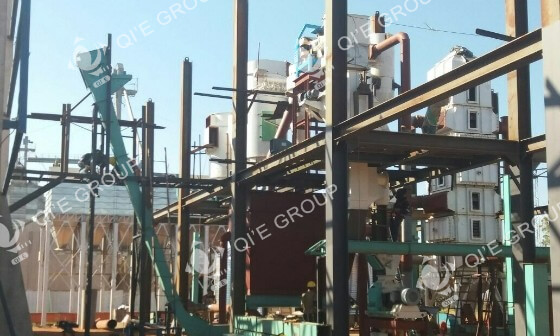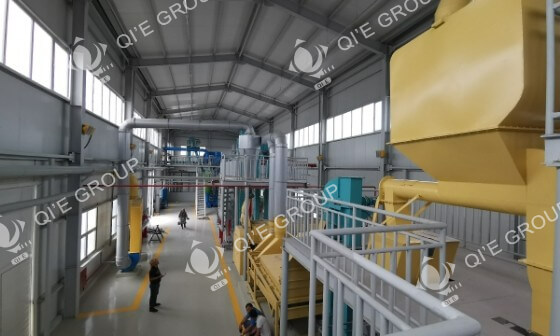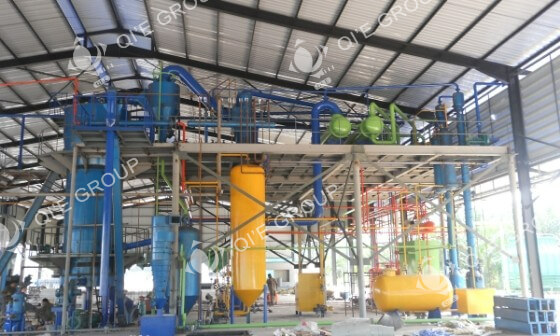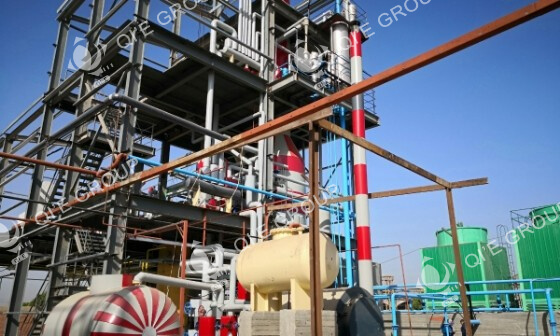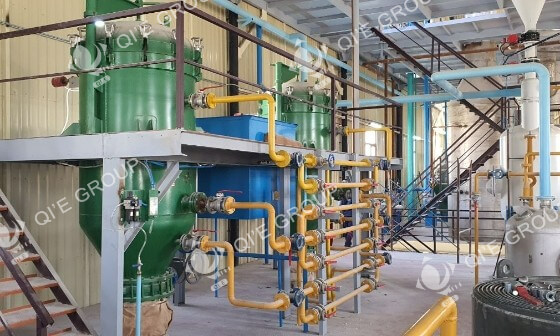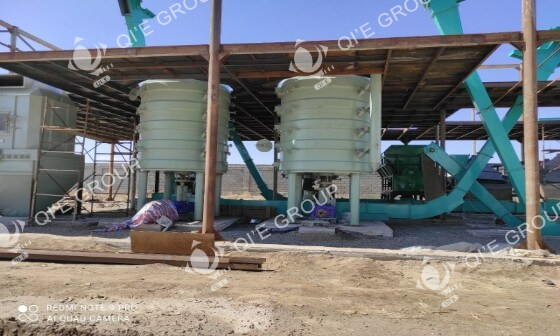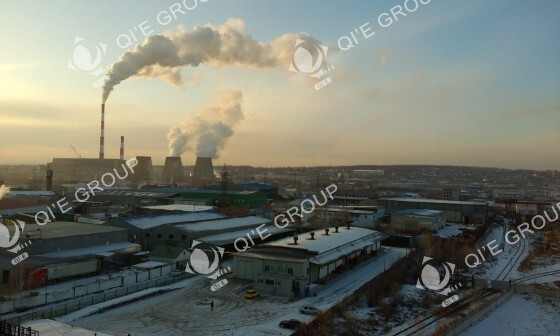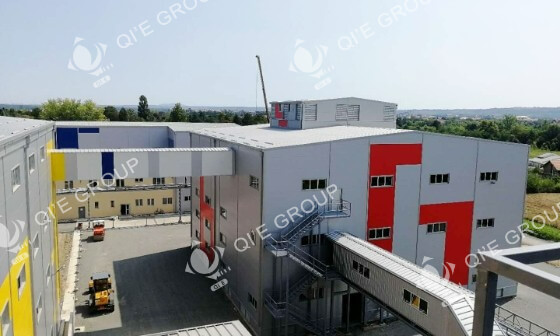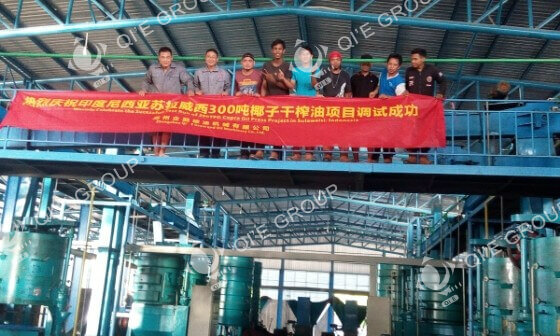Peanut Oil Production Line
Peanut Oil Pressing Methods
Generally, the husk content of peanut is 30-35%, and the oil content in peanut kernel is 40-50%. Therefore, the peanut pretreatment processes include cleaning, dehusking and separating of hull & kernels. According to pressing temperature, there are two peanut oil pressing technologies: hot pressing and cold pressing.
Processing Steps of Peanut Oil Production Line
Peanut Cleaning

There are impurities in peanuts before processing. First, a vibrating screen is needed here to remove the impurities from the groundnut. After screening, the impurity content is no more than 0.5%, and the groundnut kernel content in removed materials is no more than 1%. Then the stone is separated from the peanut by a destoning machine.
Peanut Shelling and Separating of Hull & Kernels
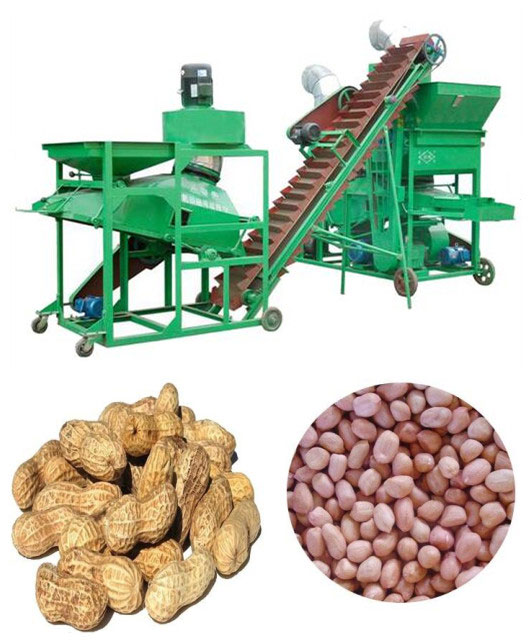 When the peanut sheller works, the groundnut are delivered into the hopper quantitatively, uniformly, and continuously. Under repeated strikes, friction, and collision of the rotor, the peanut hulls are broken. Then the groundnut kernels and broken hulls pass through the sieve in a certain hole diameter (the sieve of big hole diameter for the first shelling, and a small hole diameter for the second cleaning). Under the blowing force of the rotating fan, the peanut husks in lightweight are blown outside, and the groundnut kernels pass through the sieve to achieve the cleaning effect.
When the peanut sheller works, the groundnut are delivered into the hopper quantitatively, uniformly, and continuously. Under repeated strikes, friction, and collision of the rotor, the peanut hulls are broken. Then the groundnut kernels and broken hulls pass through the sieve in a certain hole diameter (the sieve of big hole diameter for the first shelling, and a small hole diameter for the second cleaning). Under the blowing force of the rotating fan, the peanut husks in lightweight are blown outside, and the groundnut kernels pass through the sieve to achieve the cleaning effect.
Peanut Kernels Crushing
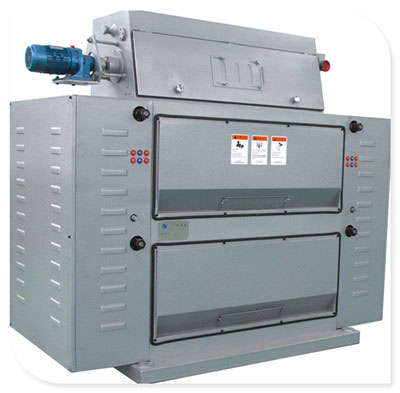 The purpose of this process is to crush the peanut into a certain granularity, which can meet the condition for flaking. After crushing, the surface area of peanut is increased, better for the transfer of temperature and moisture when softening. The peanut crushing machine is mainly the toothed cracking roll.
The purpose of this process is to crush the peanut into a certain granularity, which can meet the condition for flaking. After crushing, the surface area of peanut is increased, better for the transfer of temperature and moisture when softening. The peanut crushing machine is mainly the toothed cracking roll.
When toothed cracking roll works, the upper layer roller chute can crush the peanut kernel into 3-4 pieces, and the lower layer roller can crush the kernels into the half.
Softening, Flaking and Cooking
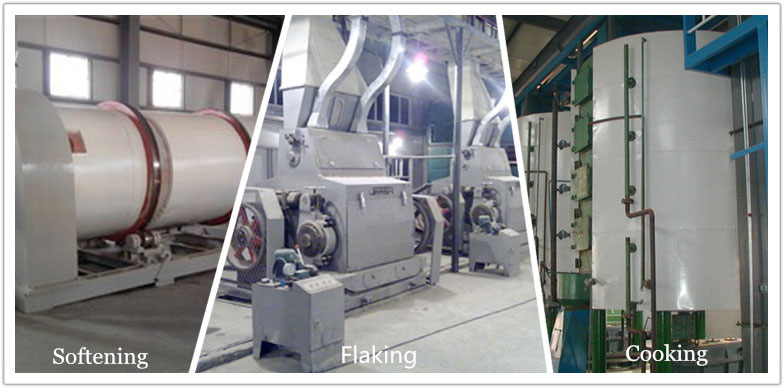
The purpose of this process is to crush the peanut into a certain granularity, which can meet the condition of flaking. After crushing, the surface area of the groundnut is increased, better for the transfer of temperature and moisture when softening.
The peanut kernel is soft, normally it does not need to be softened. Sometimes it can be flaked directly only after the suitable heat treatment. Generally, cooking is adjusted according to the conditions required for hot pressing. When the moisture content is close to 1-2% and the temperature reaches 120-130℃, it is time to finish cooking and begin to press.
Peanut Oil Pressing
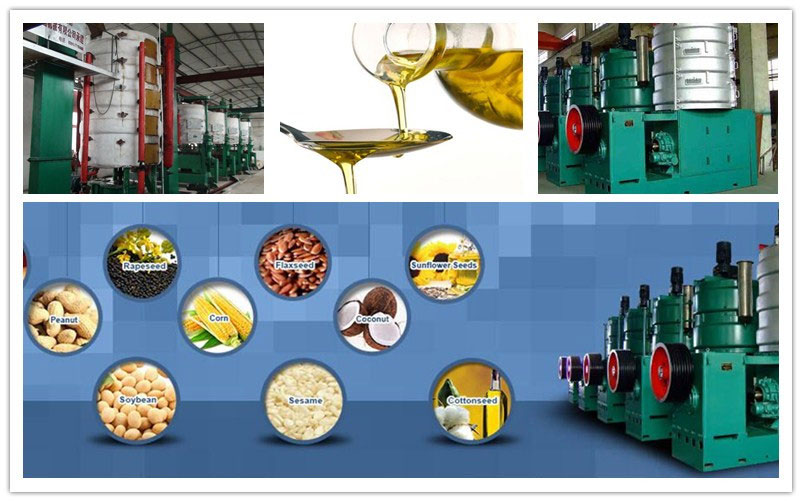 The peanut pressing processes can be divided into three stages, which are feeding stage, main pressing stage, and cake forming stage. The most common peanut oil pressing machine is the screw oil press.
The peanut pressing processes can be divided into three stages, which are feeding stage, main pressing stage, and cake forming stage. The most common peanut oil pressing machine is the screw oil press.
Feeding stage
Peanuts begin to be squeezed in this process, the air and little water are discharged, which make peanuts plastic deformation and begin to press the oil.
Main pressing stage
In this stage, high pressure is produced and lots of oil is discharged. The volume of pressing barrel is decreased rapidly and regularly, then the peanut is compacted strongly and particles are combined. Peanuts in pressing barrel become porous, then lots of oil is discharged.
Cake forming stage
Peanuts become tile-shaped cake in this stage and nearly propelled in integral type, thus producing great compression resistance. At this time, the tile-shaped cake has little compressibility, but the pressure still needs to keep high, so as to drain off the oil without absorbing back. Finally, the discharged cake is enlarged in volume because of the elastic expansion.
Hot Pressing VS Cold Pressing of Peanut Oil Production
Hot pressing is the traditional method of pressing peanut oil. With a high rate of oil output, good taste, and convenient storage, it is popular for home use. But because of the high production temperature, the peanut protein is usually severely denatured and lose plenty of nutrients.
Cold pressing technology is often applied in large peanut oil production plant. The production temperature is conducted under 60℃, which is beneficial to preserve the nutrients and comprehensively utilize peanut protein in peanut oil. The disadvantage is low oil yield, not suitable for small oil plant.
Peanut Oil Refining Process
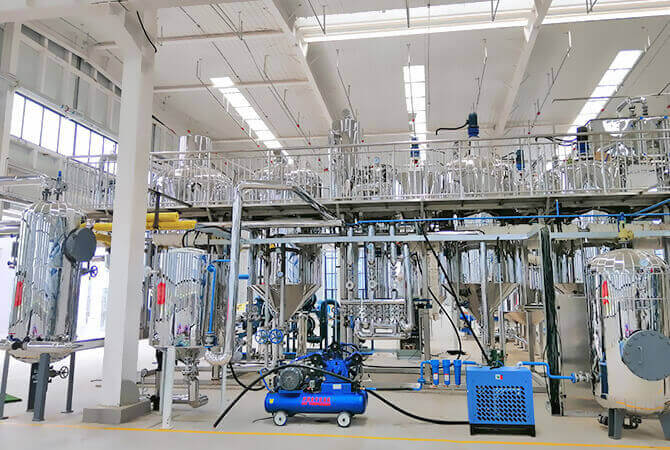
After a long period of precipitation, the crude peanut oil can be filtered by a filter and sent to a refining plant. The pressed cake can be crushed and sent to an extraction plant for secondary extraction, extraction oil is refined and sold as ordinary oil.
Refining is to remove impurities, odors, and pigments from groundnut oil and improve the quality and taste of the oil. The refining process mainly includes steps such as degumming, deacidification, decolorization, and deodorization.
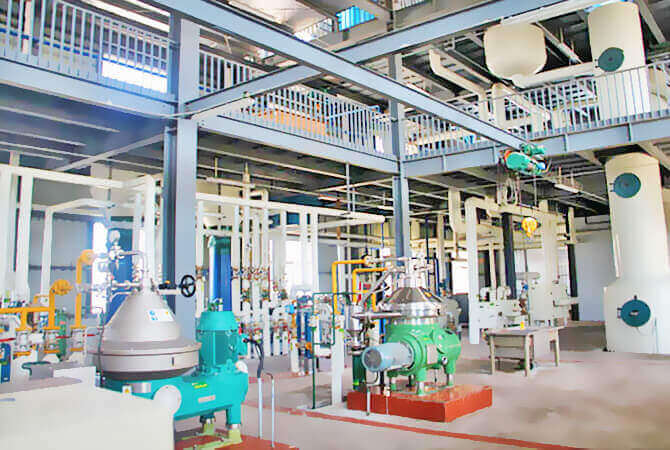
Degumming mainly removes phospholipids and other colloidal substances from peanut oil. By heating and adding chemical reagents, colloidal substances such as phospholipids are aggregated into larger particles, which are then removed by centrifugation or filtration.
The purpose of deacidification is to reduce the free fatty acid content in groundnut oil. Alkaline refining or distillation is usually used for deacidification. The alkali refining method is to add an appropriate amount of alkali solution to neutralize the free fatty acids to generate soap stock and glycerol, and then remove the soap stock through centrifugation or filtration.
Decolorization mainly removes pigments from groundnut oil to make the color of the oil clearer. The adsorption decolorization method is usually used, that is, adsorbents such as activated carbon are used to absorb pigments and other impurities in the oil.
The purpose of deodorization is to remove odors and volatile substances from peanut oil and improve the taste and stability of the oil. Deodorization usually uses high-temperature vacuum distillation, under high temperature and vacuum conditions, the odor components in peanut oil are volatilized and removed through condensation collection.
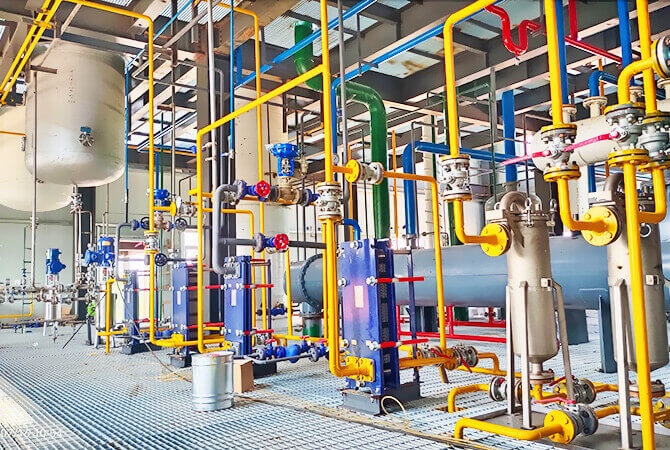
During the deacidification and deodorization process, free fatty acids and low molecular weight substances are distilled out under high-temperature vacuum and direct steam conditions. The physical refining deodorization temperature is higher than the conventional temperature. Generally around 260 degrees. During the operation, attention should be paid to rapid temperature rise, balancing the flow of the inlet to be deodorized and the finished oil, and strictly controlling the deodorization time, etc. This is directly related to the technological level of oil refining equipment.
The refined groundnut oil is cooled, filled, and sealed through automated packaging equipment for storage and sale.
Peanut Oil Production Video
Peanut Oil Introduction
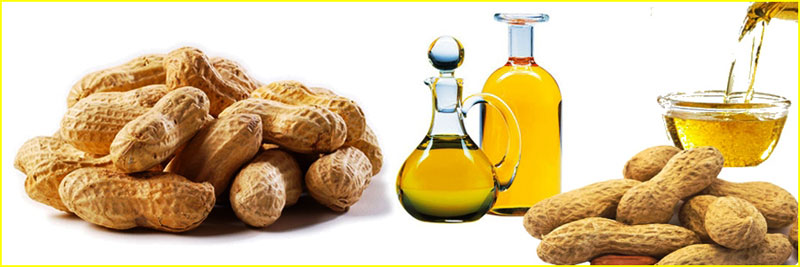
Peanut oil (groundnut oil), as a kind of light yellow transparent edible oil with a pleasant fragrance and good taste, is relatively easy to digest. Peanut oil contains more than 80% unsaturated fatty acids (including 41.2% oleic acid and 37.6% linoleic acid). Besides, there are also palmitic acid, stearic acid, and other saturated fatty acids which cover 19.9%. The fatty acid composition of peanut oil is relatively good, therefore it is easy for human bodies to digest and absorb. Thus peanut oil production industry is a large and highly developed business.
